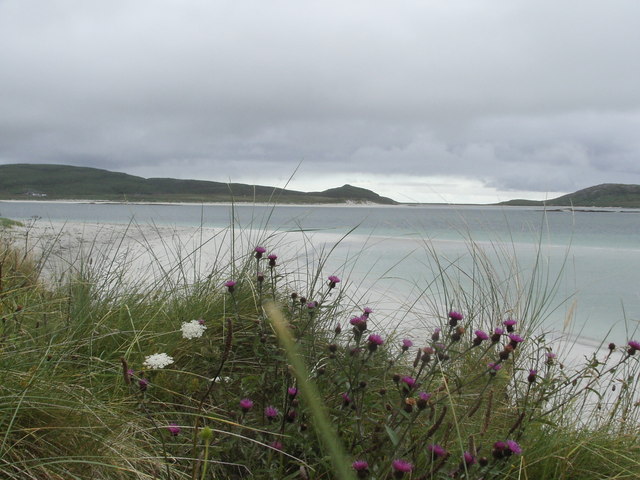Fuday on:
[Wikipedia]
[Google]
[Amazon]
 Fuday (
Fuday (
 Fuday (
Fuday (Scottish Gaelic
Scottish Gaelic ( gd, Gàidhlig ), also known as Scots Gaelic and Gaelic, is a Goidelic language (in the Celtic branch of the Indo-European language family) native to the Gaels of Scotland. As a Goidelic language, Scottish Gaelic, as well ...
: Fùideigh) is an uninhabited island of about and is one of ten islands in the Sound of Barra
The Sound of Barra is a large ocean inlet or sound situated to the north of the isle of Barra and to the south of South Uist in the Outer Hebrides in Scotland. Since 2014 it has been designated as a Special Area of Conservation (SAC). The Sound ...
, a Site of Community Importance
A Site of Community Importance (SCI) is defined in the European Commission Habitats Directive (92/43/EEC) as a site which, in the biogeographical region or regions to which it belongs, contributes significantly to the maintenance or restoration at ...
for conservation
Conservation is the preservation or efficient use of resources, or the conservation of various quantities under physical laws.
Conservation may also refer to:
Environment and natural resources
* Nature conservation, the protection and managem ...
in the Outer Hebrides of Scotland
Scotland (, ) is a Countries of the United Kingdom, country that is part of the United Kingdom. Covering the northern third of the island of Great Britain, mainland Scotland has a Anglo-Scottish border, border with England to the southeast ...
.
It lies just east of Scurrival Point on Barra
Barra (; gd, Barraigh or ; sco, Barra) is an island in the Outer Hebrides, Scotland, and the second southernmost inhabited island there, after the adjacent island of Vatersay to which it is connected by a short causeway. The island is name ...
and west of Eriskay
Eriskay ( gd, Èirisgeigh), from the Old Norse for "Eric's Isle", is an island and community council area of the Outer Hebrides in northern Scotland with a population of 143, as of the 2011 census. It lies between South Uist and Barra and is ...
. Fuday is owned by the Scottish Government. Deserted since 1901, its peak population is recorded only as seven.
It is still used for the summer grazing of cattle, and they used to be swum across the , but shallow, Caolas Fuideach (strait) to there from Eoligarry. When cattle were first introduced to the island, they were killed by dehydration. The crofters who left the cattle on the island failed to show the animals the location of the only drinkable source of water on the island, a loch far inland on the island. The cattle thus could not find drinking water and died of thirst.
Notes and references
Islands of the Sound of Barra Uninhabited islands of the Outer Hebrides {{WesternIsles-geo-stub